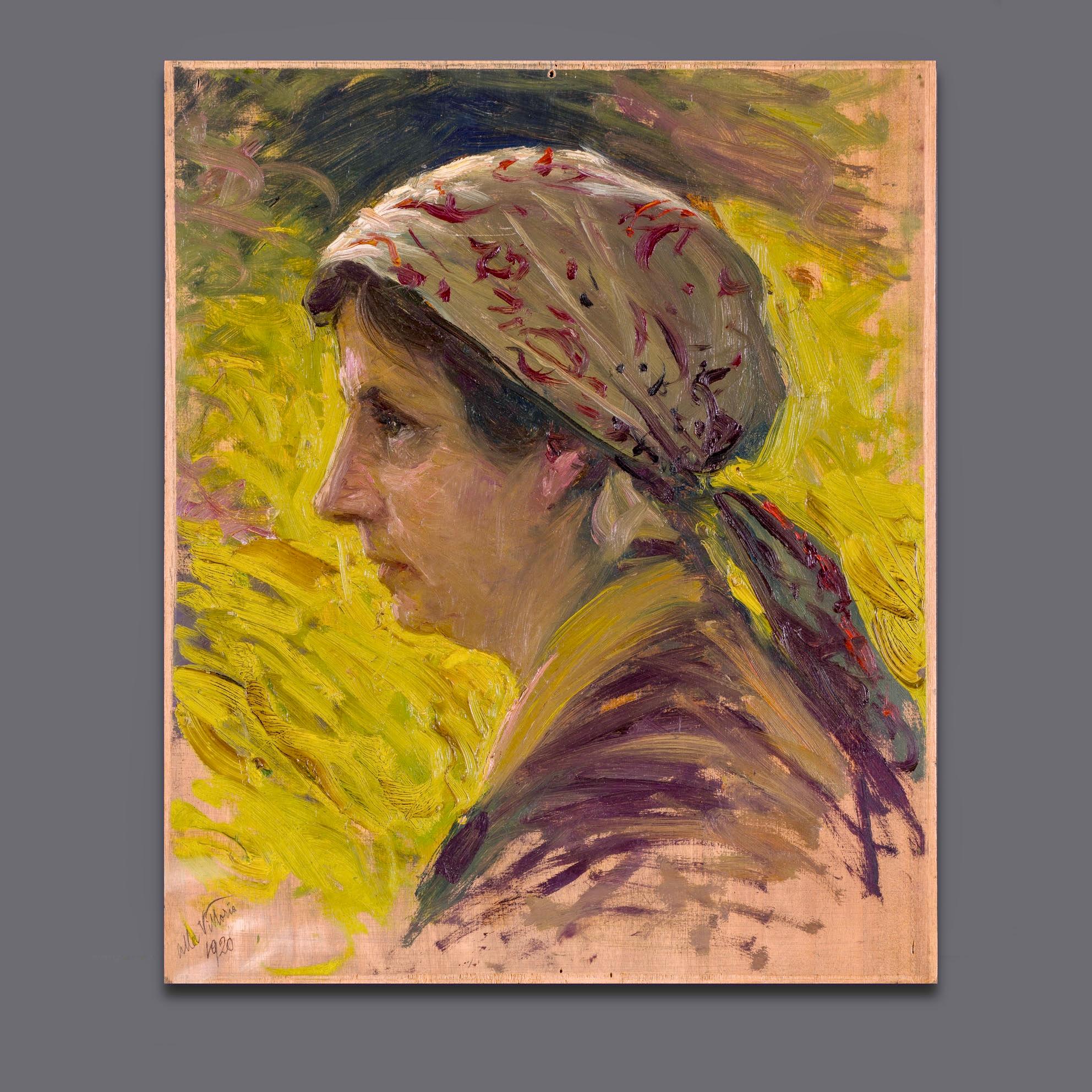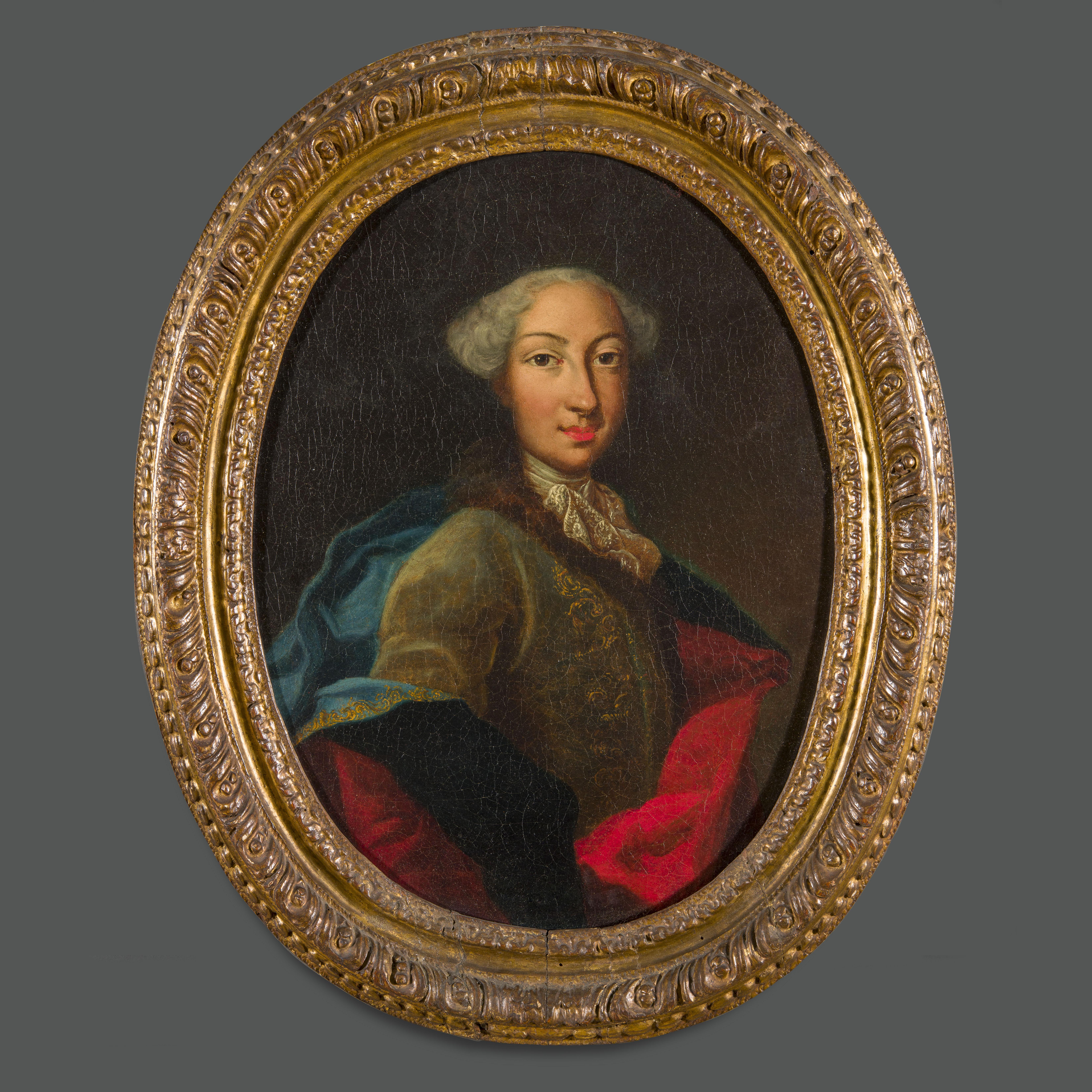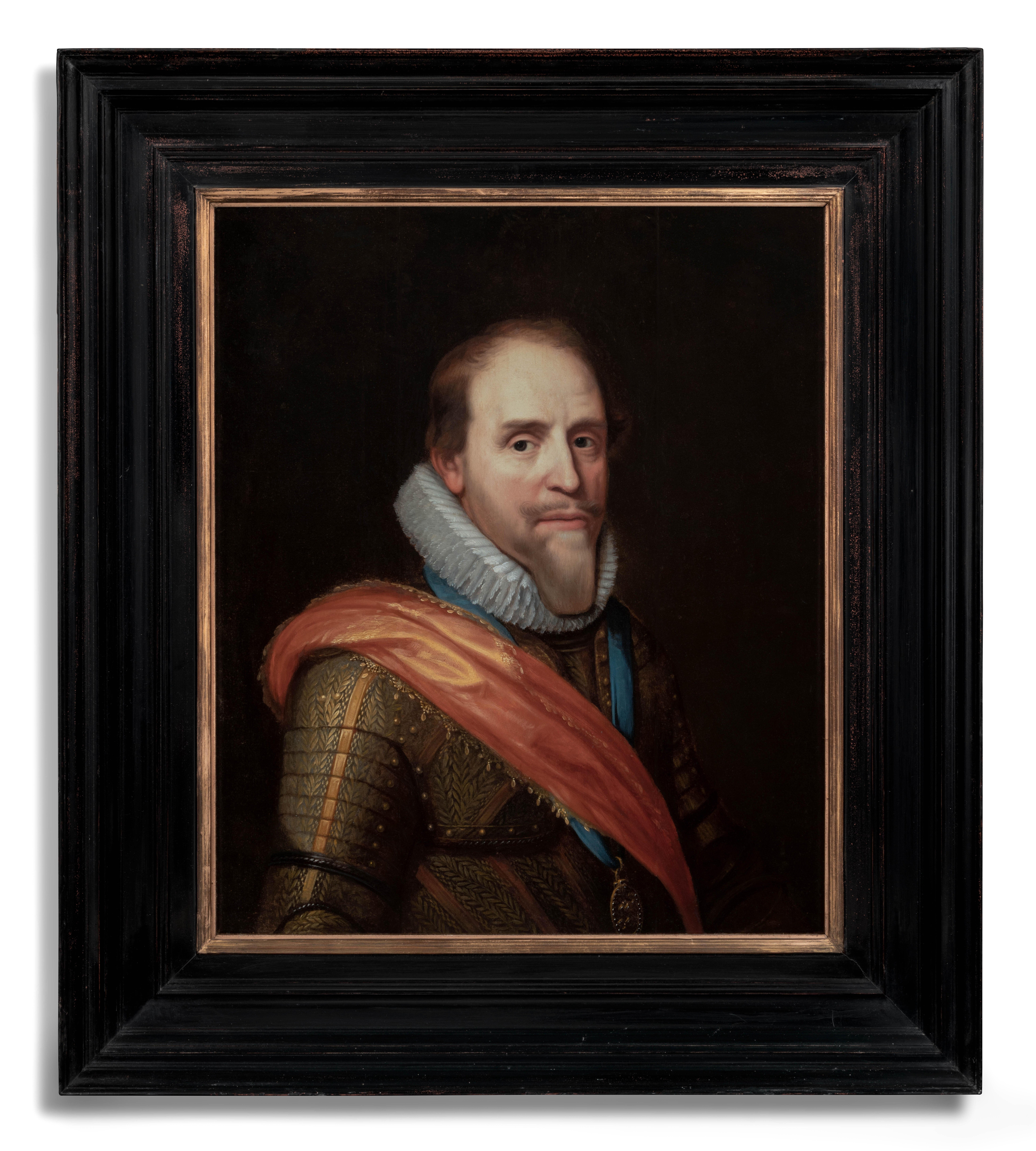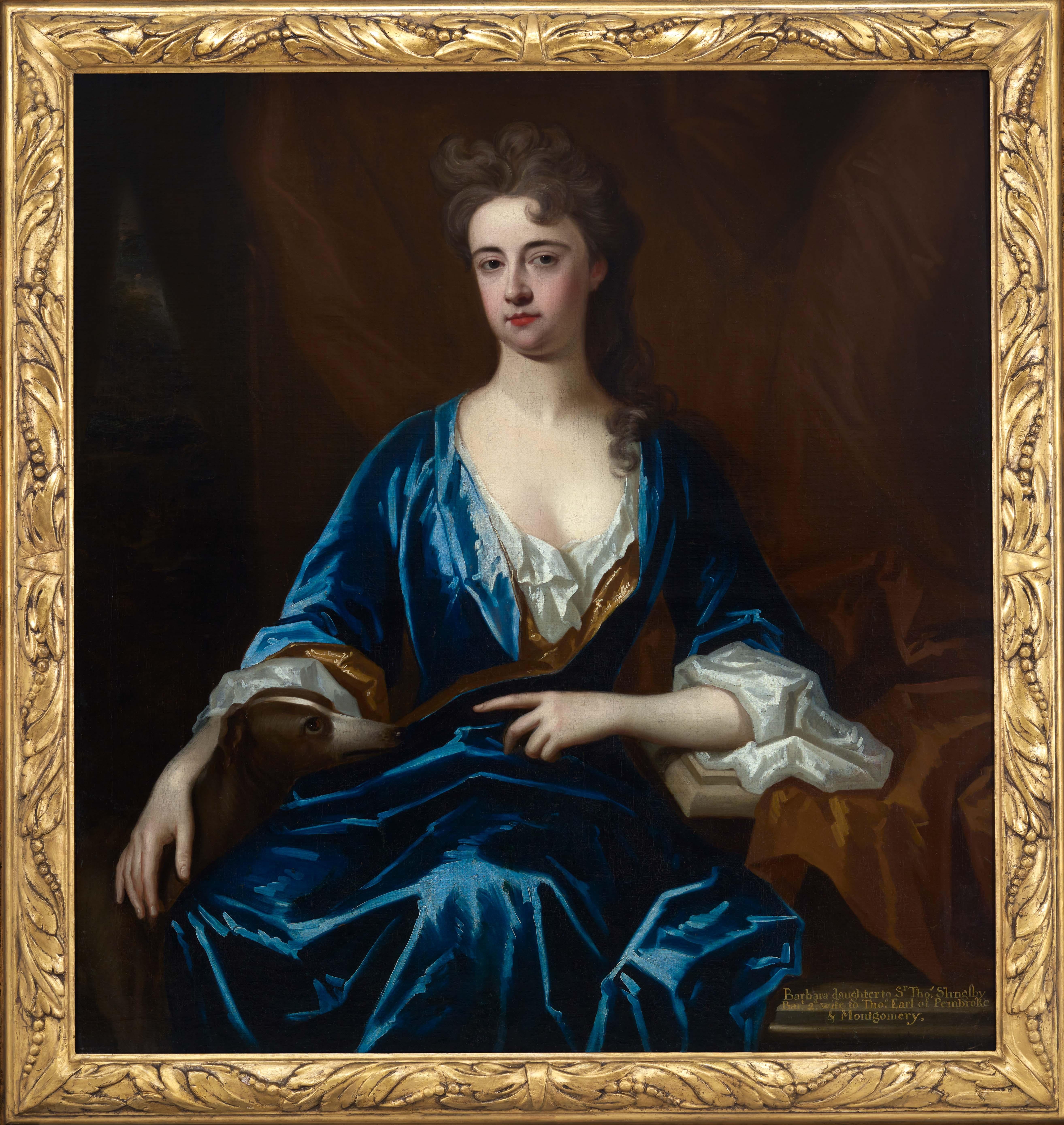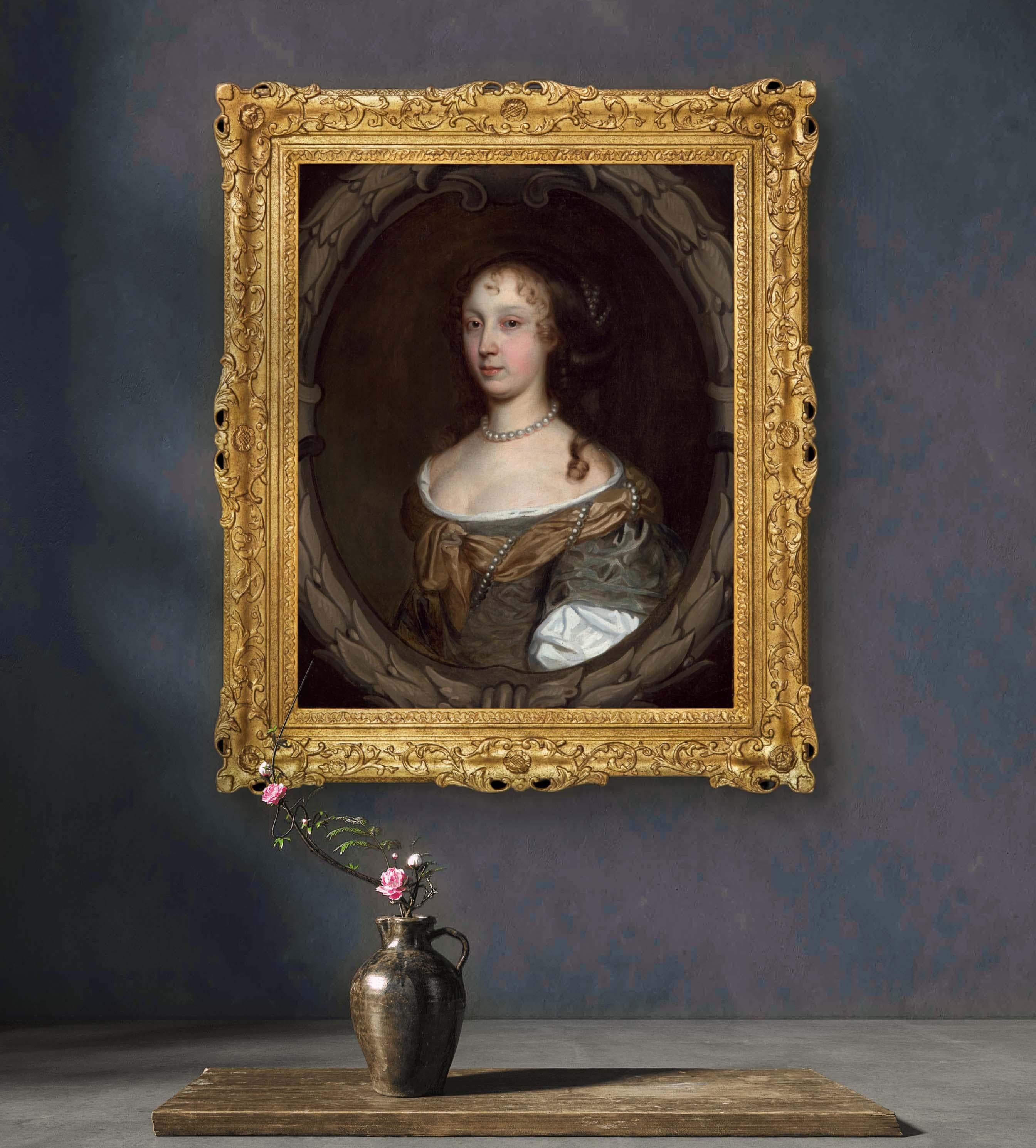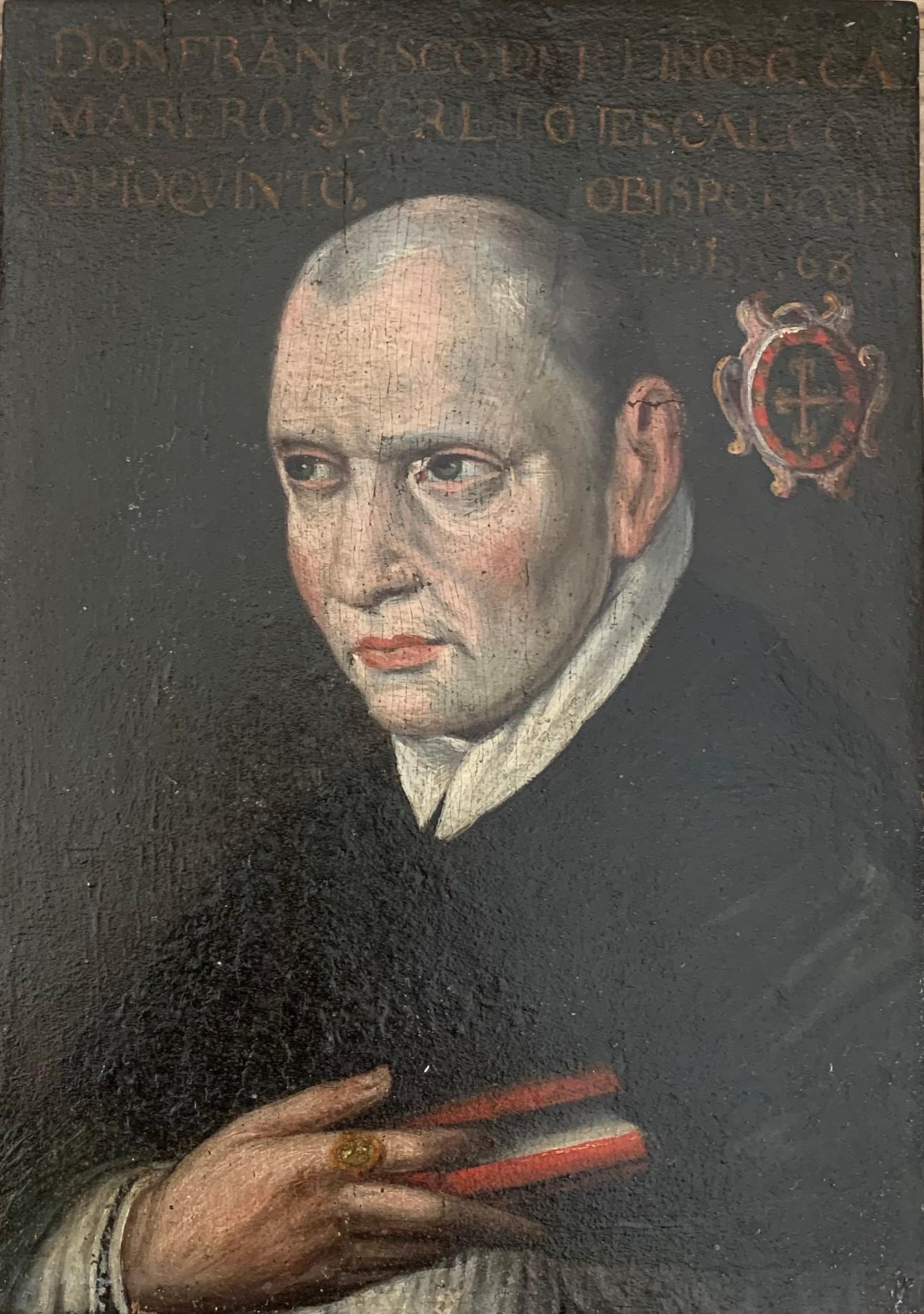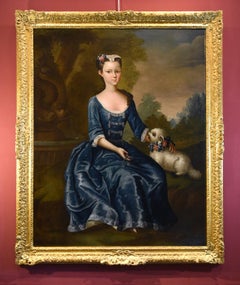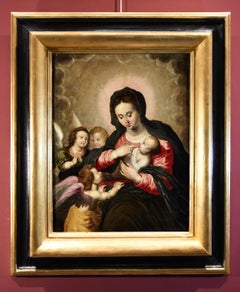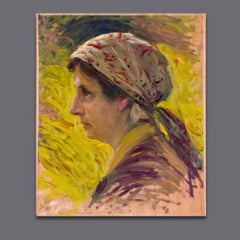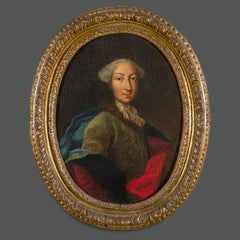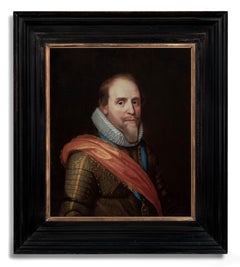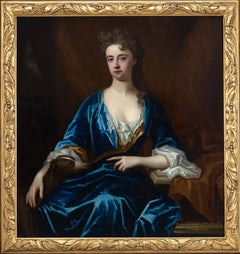Items Similar to Allegory Sculpture Trémolières Paint 18th Century Oil on canvas Old master
Video Loading
Want more images or videos?
Request additional images or videos from the seller
1 of 15
Allegory Sculpture Trémolières Paint 18th Century Oil on canvas Old master1720-1739
1720-1739
$13,084.65
£9,819.28
€11,050
CA$18,327.97
A$20,112.21
CHF 10,413.29
MX$240,759.53
NOK 130,645.16
SEK 122,911.94
DKK 84,189.26
About the Item
Pierre Charles Trémolières (Cholet, 1703 - Paris, 1739)
Allegory of Sculpture
Oil on canvas 112 x 86 cm In original lacquered frame 122 x 95 cm
Work accompanied by expertise by Prof. Emilio Negro
The painting is well preserved and depicts a refined iconography inspired by cultured classical literary models linked to the myth of Mount Parnassus, the Greek hill on which the Temple of Delphi stood and the waters of the famous Castalda spring flowed, dedicated to Apollo and populated by the Muses, the source of inspiration and poetry.
Our canvas depicts one of the legendary deities who inspired creative fervour and, over the centuries, acquired a specific influence in the fields of art and knowledge: in this case, the Allegory of Sculpture is portrayed sitting on clouds among flowers and tools of the trade (a marble slab with a sketched bas-relief, a ruler and a compass), scantily clad in silk with her head crowned with buds; she also holds a male bust on her lap, which she is carving with a mallet and chisel.
The learned subject illustrated and the peculiar dimensions of the painting suggest that it was originally an elegant “sovrapporta” intended to embellish the boiserie of the “studiolo” of an ancestral noble palace owned by a man of letters who loved music and the arts.
The stylistic characteristics of this Allegory highlight the work of a French school artist active in the 18th century, gifted with an elegantly casual creative streak and a happy predisposition for easel paintings with secular themes.
The seductive depiction is inspired by the finest examples of similar subjects produced in France and Italy in the mid-18th century, primarily the compositions of the French master Jean-Baptiste van Loo, from whom our Allegory draws inspiration for its refined style imbued with a joyful theatricality.
Both the fluid painting style with its bright but nuanced colours and the effective scenographic cut refer to the best French and Italian figurative culture of the Age of Enlightenment, and a comparison with the similar works of Pierre Charles Trémolières (Cholet, 1703-Paris, 1739) allows us to link our painting to the modus operandi of this interesting painter.
A talented scion of a noble family from the Loire region, Trémolières was invited to Paris by the Count of Caylus, a close relative, who managed to get him accepted into the prestigious Parisian workshop of Jean-Baptiste Van Loo, enabling him to win second prize in the prestigious Grand Prix de Rome (1726) and subsequently be accepted into the French Academy in Rome.
After many years in the papal capital, now famous and established, he was called back to his homeland where, at the height of his career, he was appointed head of decorations at the Hôtel de Soubise, one of the most important residences in Paris (now home to the French National Archives), working alongside other great painters such as François Boucher and Carle Van Loo.
In 1738, he exhibited a beautiful painting, “Hercules and Hebe”, at the Paris Salon, which was then destined to adorn the walls of the aforementioned important noble residence and can still be found today in the prince's bedroom.
Pierre-Charles Trémolières, Hercules and Hebe, Paris, Hôtel de Soubise (Prince's bedroom) (fig.1) These prestigious commissions, together with the pleasantness of his paintings, earned him a well-deserved reputation that made him one of the most sought-after artists among the nobility and wealthy bourgeoisie of Paris.
Therefore, in support of the proposal put forward, it suffices to compare our beautiful Allegory, as well as with the work just mentioned, with others attributed to the French master, works in which the refined stylistic features usually used by Pierre Charles Trémolières stand out in a similar way.
ADDITIONAL INFORMATION:
The work is completed by a pleasant antique frame in turquoise lacquered wood and is sold with a certificate of authenticity and a descriptive iconographic card.
We arrange and organise the transport of purchased works, both in Italy and abroad, using professional and insured carriers.
If you would like to see this or other works in person, we would be delighted to welcome you to our new gallery in Riva del Garda, at Viale Giuseppe Canella 18. We look forward to seeing you!
Please contact us for any information, we will be happy to answer your questions.
- Attributed to:Pierre Charles Trémolières (Cholet, 1703 - 1739)
- Creation Year:1720-1739
- Dimensions:Height: 37.41 in (95 cm)Width: 48.04 in (122 cm)
- Medium:
- Movement & Style:
- Period:
- Condition:
- Gallery Location:Riva del Garda, IT
- Reference Number:1stDibs: LU988117109352
About the Seller
4.9
Platinum Seller
Premium sellers with a 4.7+ rating and 24-hour response times
Established in 2017
1stDibs seller since 2018
265 sales on 1stDibs
Typical response time: 2 hours
- ShippingRetrieving quote...Shipping from: Riva del Garda, Italy
- Return Policy
Authenticity Guarantee
In the unlikely event there’s an issue with an item’s authenticity, contact us within 1 year for a full refund. DetailsMoney-Back Guarantee
If your item is not as described, is damaged in transit, or does not arrive, contact us within 7 days for a full refund. Details24-Hour Cancellation
You have a 24-hour grace period in which to reconsider your purchase, with no questions asked.Vetted Professional Sellers
Our world-class sellers must adhere to strict standards for service and quality, maintaining the integrity of our listings.Price-Match Guarantee
If you find that a seller listed the same item for a lower price elsewhere, we’ll match it.Trusted Global Delivery
Our best-in-class carrier network provides specialized shipping options worldwide, including custom delivery.More From This Seller
View AllHoly Family Piola Paint Oil on canvas Old master 17th Century Maria Religious
Located in Riva del Garda, IT
Genoese school of the second half of the seventeenth century
Circle of Domenico Piola (Genoa 1627-1703)
The Holy Family
Oil painting on canvas
83 x 68 cm. - in an antique frame 99 x...
Category
17th Century Old Masters Paintings
Materials
Oil
$7,132 Sale Price
20% Off
Portrait Woman Knapton Paint Oil on canvas 18th Century Old master English Art
Located in Riva del Garda, IT
George Knapton (London 1698 - 1778), attributable
Portrait of a young aristocratic maiden sitting by a fountain in a garden in the company of a lamb
Oil on canvas (127 x 102 cm - Fr...
Category
18th Century Old Masters Paintings
Materials
Oil
$17,240 Sale Price
20% Off
Allegory Wisdom Stella Paint Oil on canvas Old master 16/17th Century Italy Art
Located in Riva del Garda, IT
Giacomo Stella (Brescia 1545 - Rome 1630)
Allegory of Wisdom (or prudence)
Oil painting on canvas
193 x 75 cm., In frame 199 x 82 cm.
The work is accompanied by critical study drawn...
Category
16th Century Old Masters Paintings
Materials
Oil
$11,682 Sale Price
20% Off
Madonna Angels Van Balen Paint Oil on table Old master 16/17th Century Flemish
Located in Riva del Garda, IT
Hendrick van Balen (Antwerp 1575 - 1632) workshop
Possible Jan van Balen (Antwerp 1611 - 1654)
Madonna and Child with Three Angels
Oil on panel
65 x 50 cm....
Category
17th Century Old Masters Paintings
Materials
Oil
$7,255 Sale Price
20% Off
Saint John Evangelist Paint Oil on canvas Old master 18th Century French School
Located in Riva del Garda, IT
Saint John the Evangelist
French school of the eighteenth century
Oil painting on canvas
82 x 64 cm. - in frame 102 x 84 cm.
In this pleasant painting we see the portrait of the evangelist John, holding a pen in his hand while writing the pages of the Gospel, while behind him it is possible to recognize the profile of an eagle, his typical iconographic attribute.
The graceful face, which still reveals the devout attitude, which gives the painting a more intimate and delicate, not excessive religiosity, is one of the typical characteristics for works intended for domestic devotion, as in the case of this Saint John.
From the representation of the Saint the freshness of his features immediately stands out, he is in fact portrayed as young and handsome: and it is precisely this iconographic peculiarity that makes the work fascinating and very pleasant, probably commissioned for a private room.
The painting presents the peculiarities of eighteenth-century French portraiture, characterized by a soft drawing and a wise use of light. The rather marked chiaroscuro and well-calibrated shades produce an excellent result thanks to the play of light on the face, highlighted by the dark background of the scene.
The painting has been relined and is in an excellent state of conservation with the colors still bright and a very healthy pictorial layer.
The painting is sold together with a nice golden frame.
ADDITIONAL INFORMATION:
The work is sold with a certificate of authenticity and a descriptive iconographic card.
We take care and organize the transport of the purchased works, both for Italy and abroad, through professional and insured carriers.
It is also possible to see the painting in the Riva del Garda...
Category
18th Century Old Masters Paintings
Materials
Oil
$5,418 Sale Price
20% Off
Madonna Parrot Paint Oil on table Old master Flemish Follower Master of Parrot
Located in Riva del Garda, IT
'Master of the parrot' (a painter active in Antwerp in the early 16th century, whose name refers to the parrot who always occurs in his paintings) - follower of
Madonna on the throne with child
(With the coat of arms of the client family in the upper part of the composition)
Oil on the table
101 x 62 cm. - In frame 114 x 76 cm.
The beautiful proposed work explains the typical iconographic characters of the painter called 'Master of the parrot', a conventional name used by critics to define an anonymous Dutch author of the 16th century.
More precisely, it is a painter of the southern Netherlands, active in Antwerp around 1530-50, so defined for the unmistakable parrot who often appears in his works of him. In religious iconography the parrot has often been used as a Marian symbol, as it was widespread that its most common verse was "Ave", that is, the greeting of the Archangel Gabriele to Mary at the time of the Annunciation.
Today the idea according to which the name 'master of the parrot' has not referred to a single painter, but rather a group that, based on the stylistic characters, carried out their training at the workshop of Pieter Coecke Van Aelst (Aalst (Aalst is widespread. 1502 - Brussels 1550), creating devotion paintings intended for a bourgeois client and concentrating their activity on a specific topic particularly requested by the contemporary market.
By way of example we can mention the Virgin with the San Diego Museum of Art child where the figures, like our own, are in line, With the mannerist taste for the elegant body proportions that exceed reality, with elements such as tapered finger, wide face and thin nose. These characters also betray the influence of active artists in the region such as Joos Van Cleve...
Category
17th Century Old Masters Paintings
Materials
Oil
$12,838 Sale Price
40% Off
You May Also Like
1920 Cesare Ciani Credited Italian Macchiaiolo Portrait Painting
By Cesare Ciani
Located in Roma, IT
1920 Cesare Ciani Credited Italian Macchiaiolo Portrait Painting
A beautiful, intense painting attributed to the great Macchiaioli painter Cesare Ciani.
It depicts with rare realism...
Category
1920s Old Masters Portrait Paintings
Materials
Oil, Wood Panel
18th Century Italian Portrait Credited to Maria Giovanna Battista Clementi
Located in Roma, IT
18th Century Italian Portrait Credited to Maria Giovanna Battista Clementi
The painting probably depicts a young nobleman of Savoy court ...
Category
Mid-18th Century Old Masters Portrait Paintings
Materials
Oil, Canvas
Dutch Old Master Portrait of Maurits, Prince of Orange-Nassau, Oil on Panel
Located in London, GB
In 1607, the Delft city council decided to commission a portrait of Stadholder Maurits of Nassau for the town hall, with Michiel van Mierevelt as the chosen artist due to the passing...
Category
17th Century Old Masters Portrait Paintings
Materials
Oil, Wood Panel
Portrait of Lady, Barbara Herbert, Countess of Pembroke c.1708, Large Painting
Located in London, GB
Portrait of Barbara Herbert, Countess of Pembroke c.1708
Charles d’Agar (1669-1723)
This magnificent large-scale portrait, presented by Titan Fine Art, depicts the British court of...
Category
17th Century Old Masters Portrait Paintings
Materials
Cotton Canvas, Oil
Portrait of a Lady in Green Dress & Pearl Jewellery c.1660 Painting John Wright
By John Michael Wright
Located in London, GB
In this exquisite work, painted around the time of the Great Fire of London in 1666, a beautiful young woman is wearing a green dress over a white chemise and a russet-coloured scarf...
Category
17th Century Old Masters Portrait Paintings
Materials
Canvas, Oil
Spanish school. Secretary of Pope Pius V, abbot of Husillos, bishop of Córdoba.
Located in Firenze, IT
Portrait of Francisco de Reynoso y Baeza.
Secretary of Pope Pius V, abbot of Husillos and bishop of Córdoba. Francisci de Reynoso.
Early 17th century.
Small-format portrait from the late Renaissance period.
Spanish school.
Size: Cm 19 x Cm 13.5
Oil on wooden panel.
On the back the fine tablet is strengthened (already in ancient times) by a sheet of parchment.
About 1600-1610.
As often in Mannerist / Late Renaissance portraits, the image of the character is accompanied by the writing that runs at the top, adding a celebratory, historicising touch to the effigy. Let's bring back the sentence here:
DON FRANCISCO DE REINOSO. CAMARERO SECRETO IESCALCO PIO QUINTO OBISCOPO CORDOBA. 68 (? O 7?)
(1534, Autillo de Campos, Spain - 1601, Córdoba)
Francisco de Reynoso was a Spanish cleric, chief chamberlain, and secretary to Pope Pius V, abbot of Husillos, and bishop of Córdoba.
He was the fourth of eleven children. His father was the seventh Lord of Autillo de Campos, and his mother was Juana de Baeza y de las Casas, daughter of Manuel de Baeza, a lawyer of the Royal Council and at the Court of Valladolid.
Francisco de Reynoso was deeply devoted to the Virgin Mary and showed a strong inclination toward religion and piety from an early age.
He studied Latin, arts, and theology at the University of Salamanca.
In 1562, he traveled to Rome with his brothers Pedro and Luis.
In January 1566, following the death of Pope Pius IV, Cardinal Antonio Michele Ghislieri was elected pope, becoming Pius V. From this period until Ghislieri's death in 1572, Francisco de Reynoso served as his chief chamberlain and secretary.
After Pope Pius V died, Francisco de Reynoso returned to Spain and lived for several years in the city of Palencia, where his brother Manuel was a canon.
He supported the Society of Jesus when it was established in Palencia, providing alms to the school's clergy and funding chairs of Letters and Theology at his own expense, as well as donating a significant number of books.
During the brief outbreak of the Black Plague...
Category
17th Century Old Masters Portrait Paintings
Materials
Parchment Paper, Oil, Wood Panel
$1,515 Sale Price
20% Off
Free Shipping
